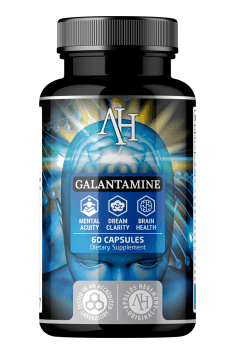Have you ever found yourself in a tantalising situation within a dream, only to realise you are in fact dreaming and have control of your actions? If so, you have been lucid dreaming. This state of dreaming can be quite a thrill, and to be able to control and remember such dreams is considered to be therapeutic and creative for the mind.
What is lucid dream?
Lucid dreams occur during REM (rapid eye movement) sleep, usually after 90 minutes of sleep, in cycles throughout the night. While the majority of people have experienced this type of dreaming at some point in their lives, it is not common to lucid dream more than a few times per year. This is an experience most of us strive to have more frequently simply for the entertainment value.
With intriguing reports of lucid dreams happening as a side effect from medication, it is evident that compounds may be able to alter the way we process dreams at night.
Double-blind placebo-controlled study
A recent study carried out in 2018 by LaBerge et al. in the Journal of Plos One, found a strong correlation between lucid dreaming and galantamine supplementation.
In this study, a group of 121 participants were given a galantamine dosage of either 4 mg or 8 mg, or a placebo over a series of nights. As a cross-over study, the users were given different dosages on different nights in order to test the supplement on all individuals taking part.
In addition to the galantamine supplement, the participants followed a lucid dream protocol where they were advised on how to acknowledge and experience lucid dreams, including a sleep schedule involving a 30-minute wake time after approximately 4.5 hours of sleep. This period of wakefulness is a well-known tactic to increase occurrence of lucid dreams, and during this time frame, the galantamine supplement was given.

Occurrence of lucid dreaming was reported by the participants if they recalled a dream, with a rating system on several dimensions of conscious experience including sensory vividness, clarity of thinking and degree of dream control.
The results
Following the study, a dose related manner was seen between galantamine and lucid dreaming. 42% of participants reported a lucid dream when taking the higher dose of 8 mg of galantamine, 27% when taking 4 mg of galantamine and only 14% with the placebo. In addition to increasing the frequency of lucid dreaming, galantamine also significantly increased dream recall, sensory vividness and complexity.
This increase in lucid dreaming was even evident for those who had never experienced a lucid dream before; 10 of the study participants reported never having a lucid dream prior to the study, of which 4 were able to achieve lucidity during the study with the 8 mg dose of galantamine.
How to take galantamine
Galantamine reaches peak blood serum concentration approximately 1 hour after ingestion, therefore should be taken just before going to sleep, as lucid dreaming usually begins around 90 minutes after falling asleep. Taking 8mg of galantamine before sleep has shown to significantly increase lucid dreaming.






